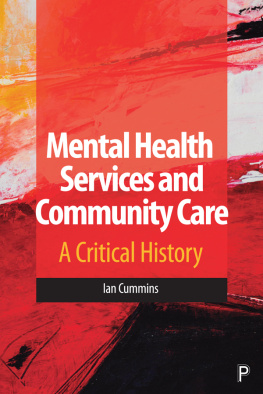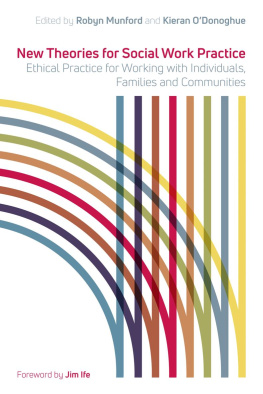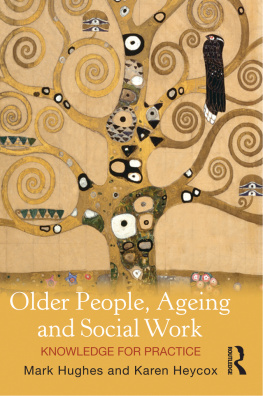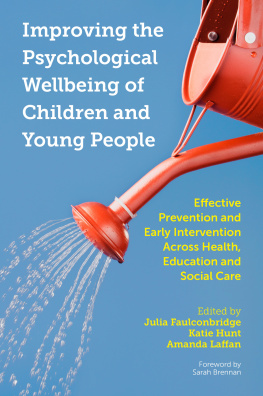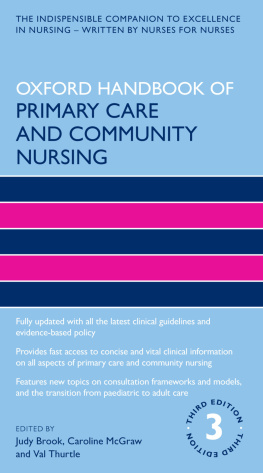COMMUNITY SERVICES INTERVENTION
Vera Lloyd has been a senior teacher in the Department of Community Work at the Canberra Institute of Technology for over fifteen years, where she has had extensive experience in the planning, preparation, delivery and assessment of community services programs. With qualifications in adult education, social work and community services, Vera has over thirty years of experience as a social worker in the community services sector, both in the Australian Capital Territory and Victoria. Her diverse career path has included work in policing, adult corrections, youth justice, services for homeless youth and child protection. She has been a lecturer in the School of Social Work at the Australian Catholic University, and works as a counsellor and advocate in a rape crisis centre in addition to her teaching work.
Vera was awarded the inaugural Best Educator in Social Work (Academic) award from the Australian Association of Social Work and Welfare Educators, and has received multiple Canberra Institute of Technology Teacher of the Year Awards. She has been recognised as an advanced skills teacher since 2006 and has been affiliated with and a member of a number of professional associations, including the Australian Association of Social Workers, Case Management Society of Australia, Australian Association of Social Work and Welfare Educators, and Diversity ACT.
As a social worker and adult educator, Vera has an interest in adult education as a framework to support community services practitioners in skills development and academic excellence in order to promote professional practice in a recognised and valued workforce.
First published 2014 by Allen & Unwin
Published 2020 by Routledge
2 Park Square, Milton Park, Abingdon, Oxon OX14 4RN
605 Third Avenue, New York, NY 10017
Routledge is an imprint of the Taylor & Francis Group, an informa business
Copyright Vera Lloyd 2014
All rights reserved. No part of this book may be reprinted or reproduced or utilised in any form or by any electronic, mechanical, or other means, now known or hereafter invented, including photocopying and recording, or in any information storage or retrieval system, without permission in writing from the publishers.
Notice:
Product or corporate names may be trademarks or registered trademarks, and are used only for identification and explanation without intent to infringe.
Cataloguing-in-Publication details are available from the National Library of Australia
www.trove.nla.gov.au
Set in 12/14 pt Adobe Garamond Pro by Midland Typesetters, Australia
ISBN-13: 9781743315231 (pbk)
The provision of adequate and appropriate social and community services (SACS) is critical to social cohesion and the development of a fair and equitable society (Australian Services Union [ASU], 2007). If we are to build a society that is inclusive, we must therefore find ways to address the disadvantage of many of its citizens. Quality of life is critically dependent on SACS, as one of the fastest growing sectors in our community, and the workforce requires strategies to deliver services in a modern economy. At the sectors core is an understanding of the importance of inclusivity and participation for all. That is, services need to be provided that promote access, equity and rights for all people, and build social inclusion, which requires the development of a highly skilled workforce.
In Australia, SACS act as a basic protection against the worst effects of poverty, social exclusion, violence and inequality, and can provide a better defence against inter-generational joblessness, abuse and disadvantage. The Local Government Community Services Association of Australia (LGCSAA) defines community services as a system for providing support to sustain and nurture the functioning of individuals, families and groups to maximise their potential for development and to enhance community well-being (Ohlin, 1998; LGCSAA, 1999). The more retractable current social problems, such as youth and aged unemployment, child abuse, alcoholism and mental health, are all largely managed by the community services workforce (Community Services and Health Industry Skills Council [CS&HISC], 2005: 34).
As illustrated in the CS&HISC Environmental Scan of 2012, there are more than 1.35 million community services and health workers in Australia. Collectively, this represents the largest industry in Australia, and the community services and health industries are increasing at twice the average rate of all other industries, and are expected to generate around one in four of all new jobs by 201516. In addition to growth, a significant array of reform activities across various community services and health sectors are driving change in service provision. This highlights the growing reliance and importance of this sector, the work of which is integral to addressing the nations health and welfare challenges.
The ASUs 2007 study into building social inclusion in Australia indicates that the skills and training shortages in the community services sector are driven by an increase in professionalisation and greater recognition of the skills needed to respond to the needs of disadvantaged people (Ride, 2007). This means that practitioners need a wider range of practical skills and underpinning frameworks, resulting in a large demand for practitioners with qualifications. It has become standard in many contexts of community services for practitioners to be required to possess a minimum Certificate IV qualification (McManus, 2006).
Recent figures suggest that while qualifications are necessary or preferred in some community services fields, the workforce consists of those with professional, vocational and no formal qualifications (Briggs et al., 2007).
SACS are provided by governments, with a large private sector that is funded primarily by the government, but incorporates non-government organisations (NGOs) and private companies that provide welfare services. The non-government sector of the SACS industry has expanded since government policy shifted to the funding of services that were once the domain of the public sector. It is therefore vital to ensure the provision of quality social services practice and the delivery of organisational public (government) and private sector (non-government) social mandates.
The increase in funding, accompanied by higher demands for professional services, has led to a higher degree of accountability in the way professionals contribute to the SACS industry and fields of practice.
In recent years, based on the introduction of government tendering for minimal educational qualifications in specialist contexts of industry (for example, alcohol and other drug fields), it is now evident that organisations are establishing minimum entry-level expectations, with duty statements and selection criteria reflecting the professionalisation of positions within the sector.
Compared with the Australian workforce as a whole, the general SACS workforce is highly educated. Workers in this sector are about twice as likely to have a diploma, and about three times as likely to have a postgraduate degree than other Australian workers (Martin & Healy, 2010). A large part of the explanation for these differences is the very high proportion of professionals working in the general SACS sector who have obtained university-level qualifications.
According to the CS&HISC (2010: 4), the ongoing supply and quality of vocational practitioners is central to workforce development in the SACS industries. Approximately 40 per cent of workers are trained in the higher education sector (such as doctors, nurses and allied health professionals), with the remainder of the workforce either untrained or trained in the VET sector. The continued and increasing demand for health and community services is being driven by an ageing population, increasing levels of disability and persistent rates of chronic disease. An appropriately skilled workforce is recognised as a crucial element in a comprehensive and effective system of generic SACS. Formal training and qualifications are central to the skill level of this workforce, as are a range of other learned competencies that allow workers to handle the complex issues and problems they encounter at work.



